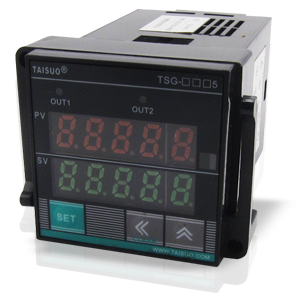 |

C-Temp International supplies standard for general process control applications. These universal controllers offer a variety of features including easy set up and programmability.
Standard Features (Series Dependent):
- Universal Input for Thermocouple, RTD, and Linear Signals
- RS485 Opto-isolator Serial Interface, meets MODBUS/RTU Protocol
- Automatic/Manual Modes for Selection
- PID Control
- Power Output for Two-wire Transmitter
- Opto-isolator Digital Input for Second Set and Other Programmable
- Functions
- Programmable OFF-SET for Input Signal
- Settable Max Output Percentage to Load
- Selectable Heating/Cooling Control Action
- Max/Min Set Points
We have the following standard products: Panel Mount or DIN Rail Mount
|
|
|
|
Products | About Us | Request A Quote | Industries | Resources | Contact | Home
Copyright 2012 C-Temp Inc. | All Right Reserved
|
|
INDUSTRIAL TEMPERATURE CONTROLLERS
|
An industrial temperature controller is a device that receives input signals from a temperature sensor (i.e., thermocouple, RTD or thermistor) and processes the data to transmit output signals based a predefined set of values. The output is sent to a separate controller that will, in turn, make adjustments to the end process being controlled. Typical input signals to an industrial temperature controller (most common temp controllers are the PID type) are an analog format; such as, voltage, current and resistance. These are most commonly generated by a thermocouple, resistance temperature detector (RTD) or a thermistor. Many controllers use MODBUS RTU for networking communications, an industry standard protocol utilizing a RS-232 or RS-485 serial connection. MODBUS RTU is an open, 16-bit architecture widely accepted by Building Management Systems (BMS) and Industrial Automation Systems (IAS). Universally shared features of temperature controllers are programmable modes or setpoints that allow users to adjust parameters to their specific needs or process control applications. In closing, all include a LCD or LED display that providing visual programming details and setpoints.
C-Temp International was original supplying temperature sensors to serve the HVAC, industrial, food service, process control, and military equipment markets. In the early days, nearly all of the temp sensors were thermocouples, RTDs or thermowells. Over the years, we have been adding additional products that are complementary to our line of temperature sensing offerings, one of which is the industrial temperature controller. It is a natural fit as most of our customers require a controller to process and transmit the input data. Today, C-Temp International is dedicated to evolving to advance our manufacturing standards and capabilities for the benefit of our end users and major OEMs. We are eager to support your temperature controller needs.
|
|
PID TEMPERATURE CONTROLLERS
|
PID (Proportional-Integral-Derivative) temperature controllers are commonly used in a variety of process control industries. They are popular because they are simple, low cost, easy to use and offer programmable flexibility. Essentially, the PID controller uses a control loop feedback mechanism to calculate an “error” value to distinguish between the set value and the measured value of the process. The PID uses an algorithm involving 3 independent parameters; proportional, integral and derivative, to determine an action, position or signal to transmit.
Most PID series controllers are offered in a ¼, ⅛ and ?16 DIN panel mount configurations. The ¼, ⅛ and ?16 refer to the panel thickness not the actual cut-out for the PID module size. These controllers offer a variety of features as an integrated controller, high amperage output, current monitoring, serial communications, and enhanced control options. The integrated controller provides users with a simpler connection and installation procedure. The high current output eliminates the need for a separate power supply. With current monitoring, the unit detects and provides alarms should the device fail. The added feature of multiple serial communications gives the flexibility to use any of the following protocols: MODBUS RTU/TCP, EtherNet/IP, PROFIBUS DP, or DeviceNet.
Several advanced features of some PID Temperature Controllers include auto detect hardware, auto or manual tuning, process and loop alarms. Some PID controllers offer IP65 or IP 67 water resistant enclosures for outdoor environments. Some of the latest PIDs offer enhanced control options to handle complex problems such as cascade ratio, square root and motorized value control without slide-wire feedback.
|
|
|
